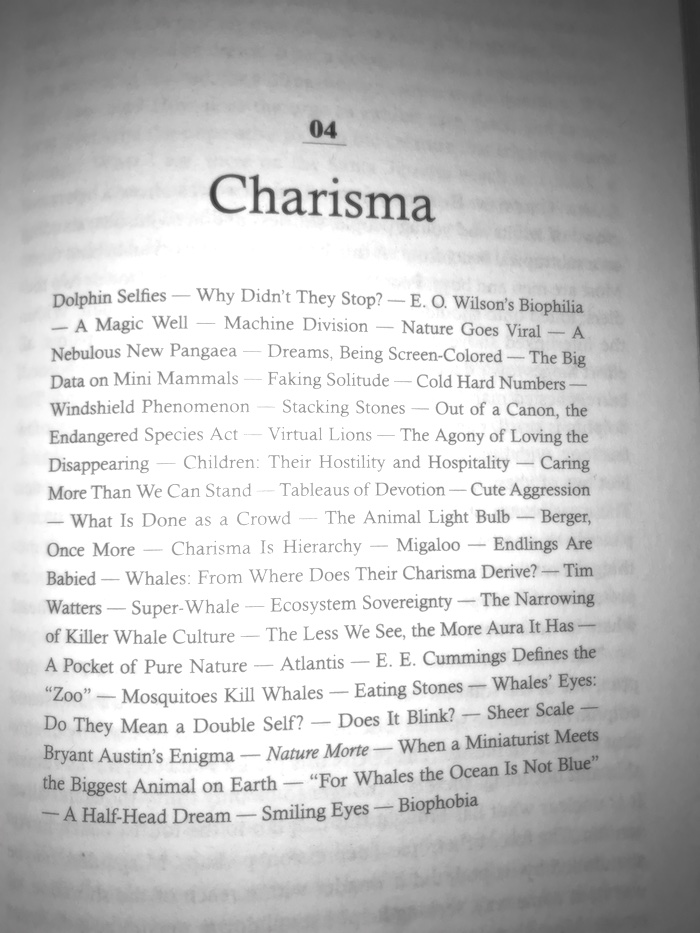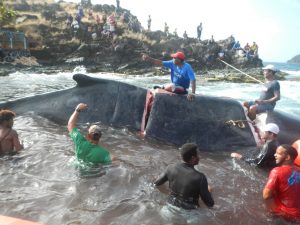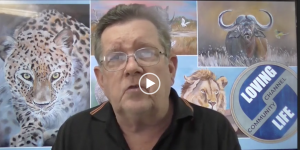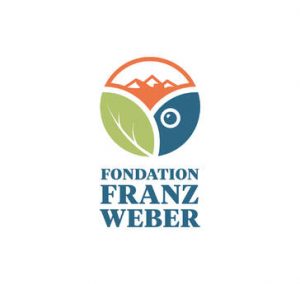Fathoms: the unit by which depth is measured. 1 fathom = 1,82m = 6 feet. The title of the first book by Australian writer Rebecca Giggs immediately implies a depth of content, a deep-dive into the world in the whale – a book to better understand the order of cetaceans maybe? One might expect a treatise on the psychology the whale, somewhere along the lines of Whitehead’s and Rendell’s The Cultural Lives of Whales and Dolphins (Whitehead & Rendell, 2014) or a study of the ways cetaceans interact with the world or, at least, with us humans.

However, this book is different. But allow me to present an overview of first. In comprises ten chapters, including a Prologue and an Epilogue. At a first glance, these chapters do not make much sense, but can stylistically located within prose, such as “The Oooo-ers” (Chapter 2), “Charisma” (Chapter 4) or “Kitsch Interior” (Chapter 7). When opening the pages of the respective chapter, each is accompanied by a large number of keywords or one-word content.
I’m not sure what the purpose of this is, especially because the book also contains an Index at the end. But be that as it may, this overview of the chapters’ contents simply reflect the richness of the overall narrative – the worlds of influences onto whales and the worlds of influences of whales on us.
And indeed, the first, say, one-third of the book is exactly about the way whales have shaped, and still are shaping, human consciousness, our cultures and what they cause in us humans. Why are whales so fascinating for us? At the same time, she paints a daunting picture of how, despite this fascination, Homo sapiens has been altering the whales’ habitats and how we have influenced them. Indeed, it is our world which can now be found inside the whale: either in the shape of broken-off lances, plastic or fishing gear in their stomachs, or in the form of pollution. Especially the latter is a frightening thought: whales are not only getting polluted by us, but due to the accumulation of pollutants, they become the pollution themselves.
In her book, Rebecca Giggs essentially uses three different types of narration: first, she delves into her own history and her encounters with whales – for instance with a stranded humpback whale in Western Australia or on a whale watching boat in Eden, New South Wales. These autobiographic elements are written in a way that is prosaic, novellistic indeed, allowing her to self-reflect and to subjectively reflect upon the influences of whales onto human consciousness.
Her second narrative is historical, i.e. a cultural historical journey through the different social settings in which whales have played some kind of role, for instance through rock carvings – petroglyphs – in Aboriginal Australia or in South Korea. Particularly the information presented in these sections are incredibly rich in detail and reflection, enabling the reader to almost personally get to know the issues Giggs so colourfully writes about. On some instances, however, I would have liked to see illustrations of what she means. Unfortunately, there are no illustrations at all in the book. For example, aforementioned petroglyphs in Australia, located at Balls Head in Sydney, play a rather important role in her narrative. While she describes them in detail, they are not necessarily easy to draw in your own mind.

Be that as it may, the third strand of her narrative is scientific. And not merely in the natural science-way, but also delving into political sciences or anthropology. While, quite naturally, the natural sciences play a rather important role in the book, they serve not as the point of departure. That is to say, while Giggs refers to population statuses, biology and ecology, she does not judge the other elements of her narrative by them. Instead, the rather neutrally establishes the links between the history of commercial whaling, population declines and the re-bouncing of many whale species/populations. And all this in a prosaic writing style, which makes it very easy for the unfamiliar reader to understand. Luckily, my inchoate fear of not knowing where exactly she draws her information from was not justified: a very extensive list of ‘Further reading’ is provided for each chapter at the end of the book.
Throughout the text I gained the impression that it was very personal for the author. Giggs’ style feels as if she was standing in front of you, telling you a fascinating (and frightening) story. Did you know, for example, that solar flares may have an impact on sperm whale orientation and thus may be the explanation of mass whale strandings? I certainly did not. I was always under the impression that ocean noise is the main culprit. But maybe I simply did not read the news, such as on LiveScience, properly…
Having done research on whaling in Japan myself, especially the chapter entitled ‘Sea Pie’ was utterly fascinating. In this chapter, Giggs deals with her trip to Shimonoseki from where the large whaling vessels depart – in the past to go to the Antarctic to engage in the infamous research whaling programmes and in the present to conduct commercial whaling in Japan’s Exclusive Economic Zone. In this chapter, she skilfully weaves together her different narratives and clearly and concisely outlines the challenges surrounding Japan’s whaling culture. I’m glad to see that she has even taken into account the long history of mourning whales in Japan, which does not stand in contrast to killing them. I’m even more glad to see that she has listed one of the most fascinating studies on this issue – if not the only one – in her Further Reading section for this chapter: Mayumi Itoh’s The Japanese Culture of Mourning Whales (Itoh, 2018). However, on page 201 she refers to Shinto Buddhism, which is not entirely correct. The Shinto belief has a long parallel history with Buddhism, but it is a stand-alone religion that is primarily practiced in Japan. But this is merely a minor issue in this regard.
Be that as it may, once again Rebecca Giggs presents her skills as a writer of a captivating narrative. I was able to picture the port of Shimonoseki, the special type of rain and the gathering of people welcoming whalers before my inner eye all too well. And the fact that, as an Australian doing research on whaling in Japan, she actually tried the minke whale soup is laudable. Not surprisingly, she did not finish the bowl, but she approaches Japanese whaling not in an accusatory manner, but rather presents it as an issue the history and continuation of which is inherently complex and that there is no one-sided solution. In fact, she also notes that there are significantly more pressing threats to whales than current Japanese whaling activities.
And this becomes abundantly clear in the subsequent chapter ‘Kitsch Interior’. Here, it is plastics and garbage which paint a very bleak picture of the state of our oceans. A stranded sperm whale having ingested an entire freezer speaks for itself. The flowing text is ‘interrupted’ (for lack of a better word) by some data on whale strandings, such as:
Sperm whale
Isle of Harris, Scotland, 2019
In a “litter ball” weighing over 22 pounds: knotted
synthetic netting, ropes (red, blue, green, brown:
some as think as an adults wrist), packaging tape,
plastic drinking cups as from a child’s birthday
These insertions are truly disturbing and of course also makes you wonder how this can ever be resolved. In this chapter, Giggs delves into several other issues, such as hybriditisation and the legal status of hybrids, plastic gyres and live-whale-eating kelp gulls on the Argentinian coast. While for the experienced whale/ing-researcher some of these issues are not new (apart from the whale-eating gulls, which I had never heard of before!), they are nevertheless embedded in a fascinating narrative that captivates the reader.
How can I conclude then? The first conclusion is that the research Rebecca Giggs has put into this book is impressive! She has really done her homework in terms of thoroughness and has included a myriad of different issues relevant for whales, their conservation and, in the end, for us. The second conclusion is that she is an extremely skilled writer. While I had to get used to the writing style and to the way the book has been set up, I was not able to stop reading because not only did I learn quite a few new words from the English language, I also learned quite a few new things about the topic at hand. The third conclusion is that this book should be standing on every bookshelf of people dealing with or being interested in whales, whaling, whale management, the International Whaling Commission or whaling cultures. This book is a novelistic compendium that is truly captivating. The sophisticated level of (self-)reflection provides a lot of food for thought and I can therefore only reach this final conclusion: Rebecca Giggs’ Fathoms is a must-read!
References
- Itoh, M. (2018). The Japanese Culture of Mourning Whales. Whale Graves and Memorial Monuments in Japan. Abingdon: Routledge.
- Whitehead, H. & L. Rendell (2014). The Cultural Lives of Whales and Dolphins. Chicago: The University of Chicago Press.
Bibliographic information of the reviewed copy:
Giggs, Rebecca (2020). Fathoms. The World in the Whale. First edition. New York: Simon & Schuster, hardcover, 340pp, ISBN: 978-1-9821-2069-6, 25,55€.





